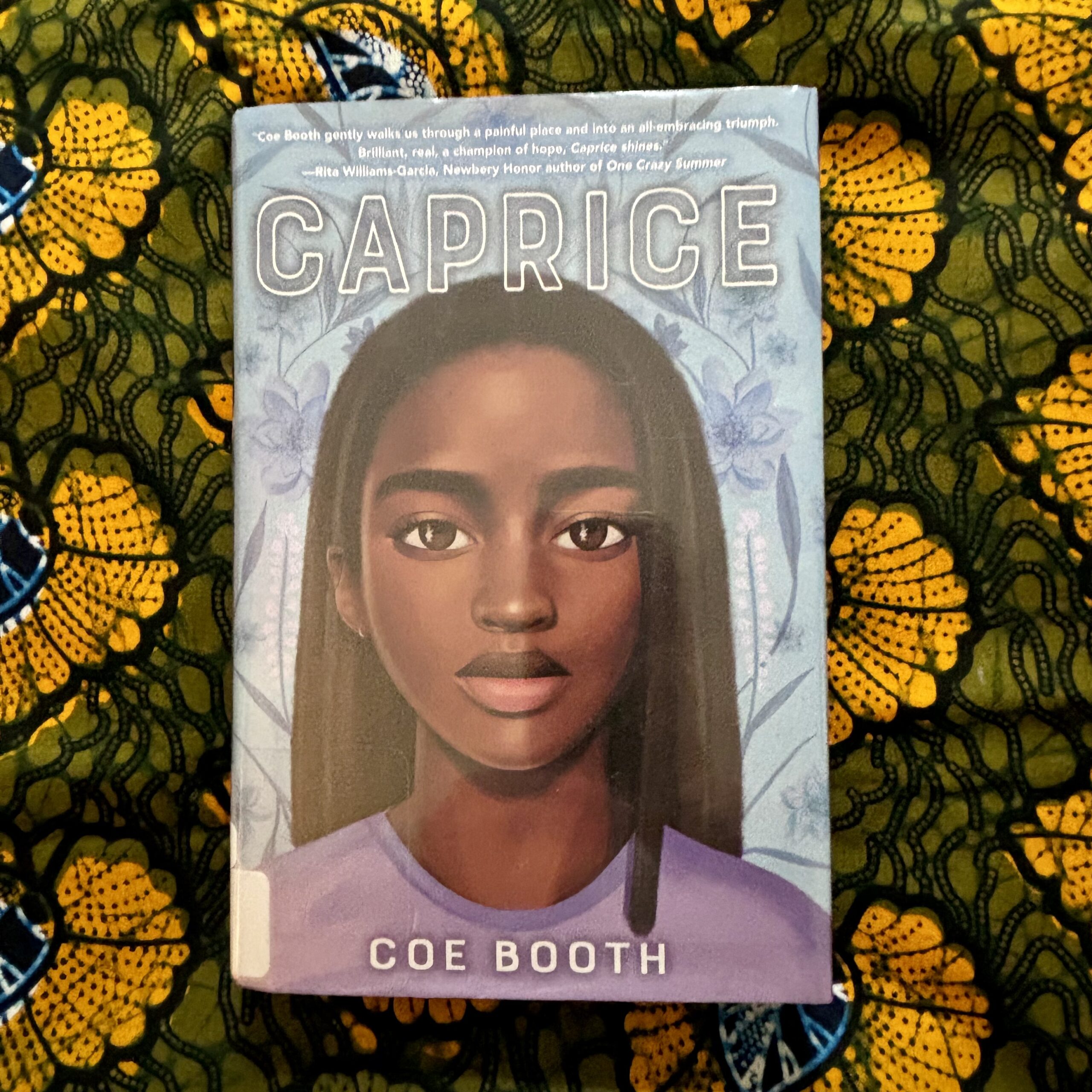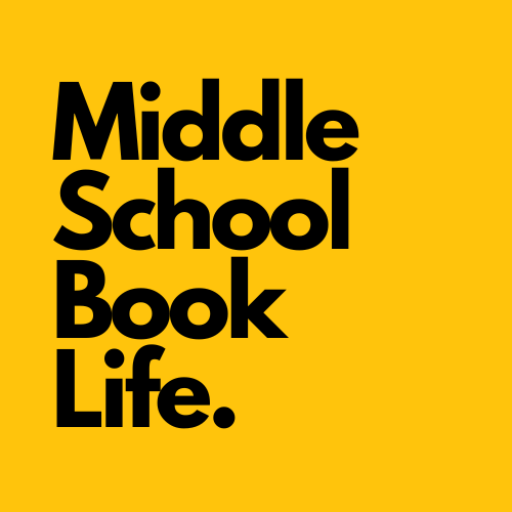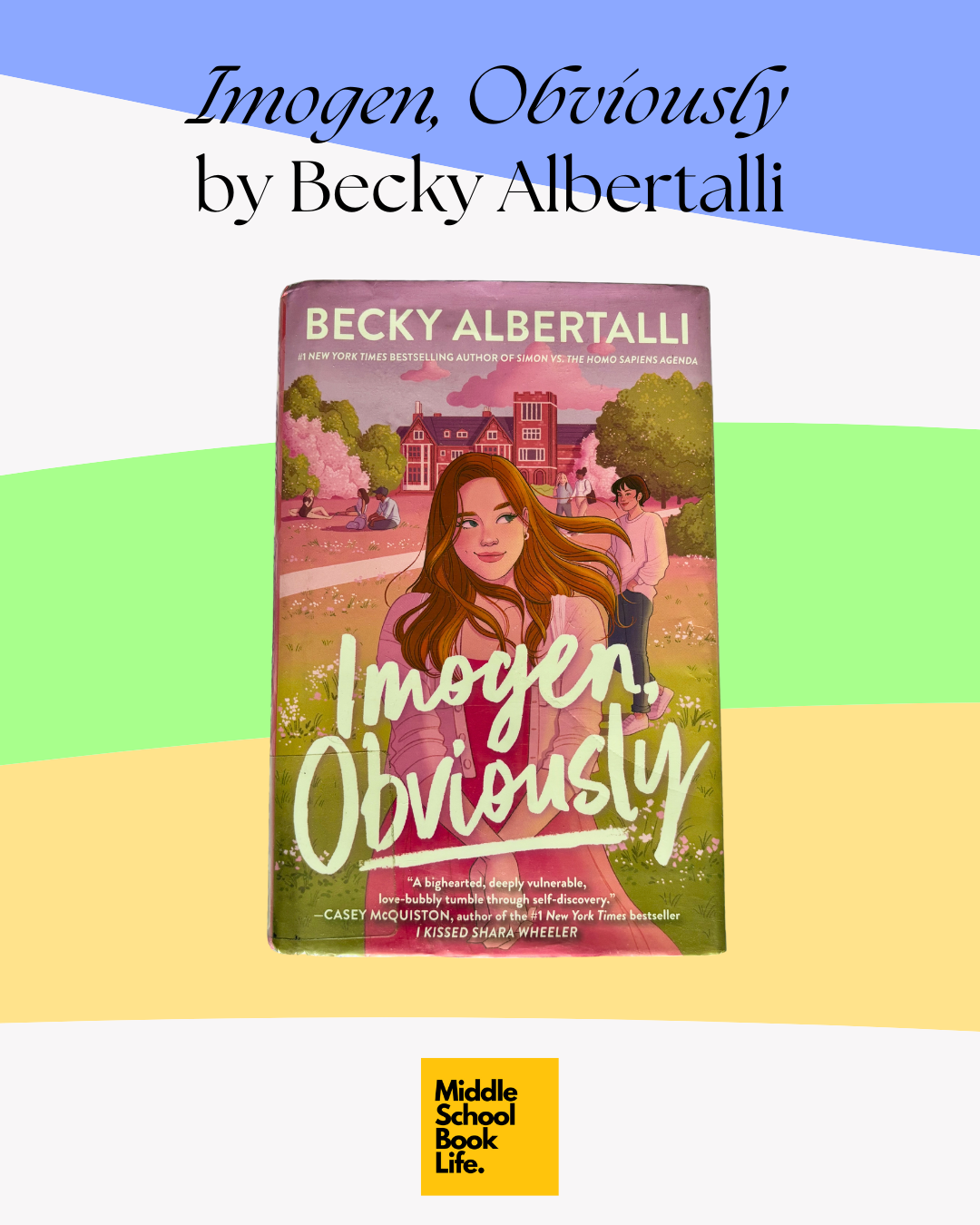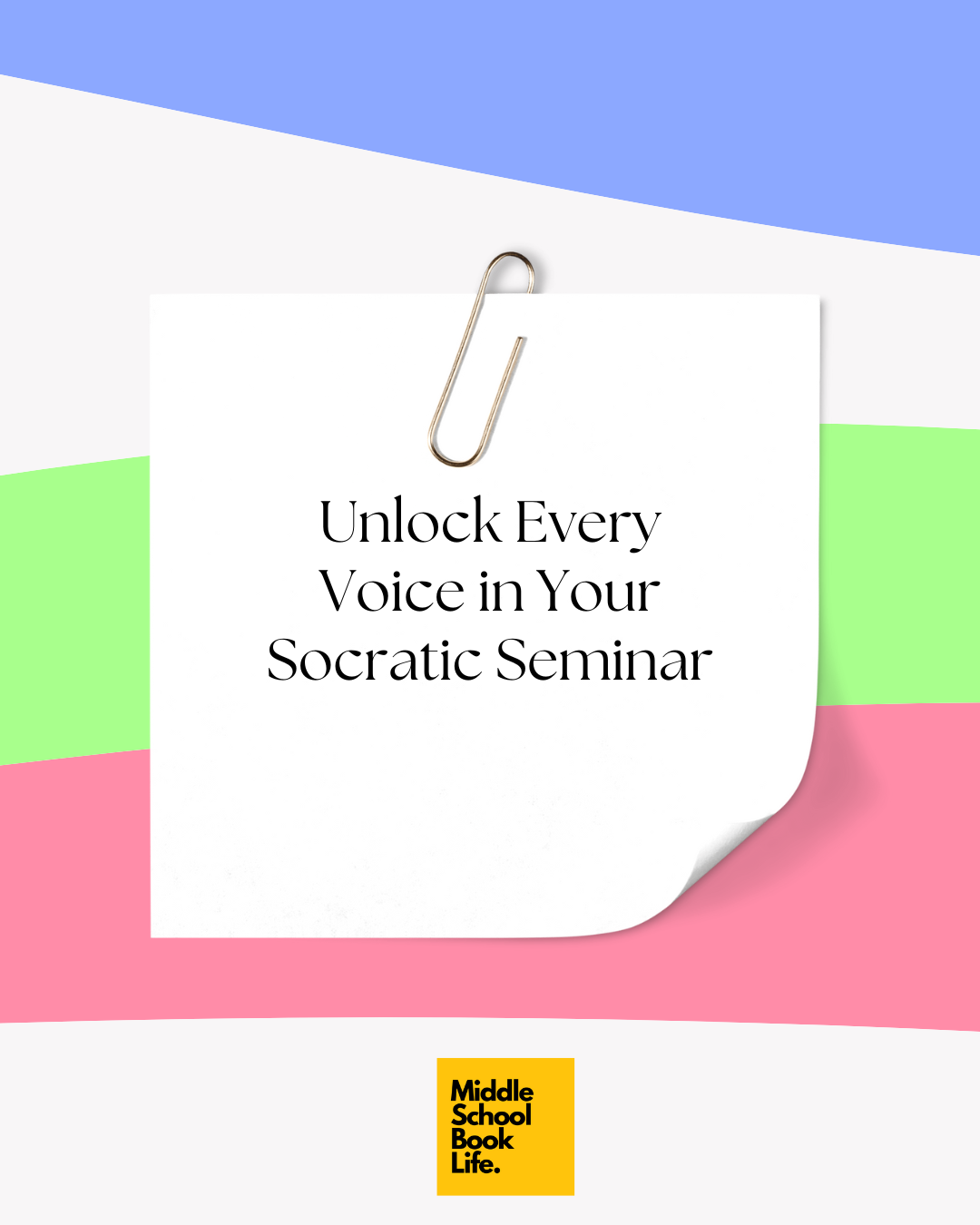If you’re a health teacher or a school counselor, I expect you’ll really like Caprice. Anyone who works with 7th to 9th graders* should snag a copy as this story shares (amongst many rich storylines) a “how to” guide for speaking up in the face of sexual assault. I hope none of your students need it. But let’s make it accessible, just in case.
*For younger readers who need age-appropriate guidance on this topic, offer “Chirp” by Kate Messner. For older readers, “Dear Medusa” by Olivia A. Cole.

Title: Caprice
Author: Coe Booth
Genre: Realistic fiction
Age range: 11+ (Best for 12-14 year olds)
Summary: Caprice has just arrived home in Newark after a vibrant 7-week Summer Leadership Program at an independent all-girls school in upstate New York. She loved every moment of it—until an incident at the end of summer party causes a panic attack. As Caprice arrives home to her friends who are embracing their more-mature 8th grader status and the news that her estranged grandmother is hospitalized in Baltimore, Caprice isn’t sure if she can continue to hold in the traumatic secret of her past—or if she wants to anymore.
It’s similar to:
Chirp by Kate Messner (middle school aged girl learns how to tell a trusted adult about sexual assault)
Not an Easy Win by Chrystal D. Giles (middle school student finds friendship, acceptance, and belonging at the local community center)
Piecing Me Together by Renée Watson (young teenage girl embraces the value of both her neighborhood and her private school while seeking to express herself through poetry)
Why Caprice is an engaging addition to your classroom library:
Booth has experience working with teenagers and families in crisis and her knowledge is apparent throughout the book. While it’s so much more than a sexual assault story, it still provides a “here’s what should happen” roadmap for when a victim speaks up. Booth gives Caprice friends who realize she is not OK—and the friends tell trusted adults who can help Caprice. Spoiler ahead: at the end, Caprice speaks up, her abuser is arrested, and Caprice realizes that her revelation does not break her family apart but instead reaffirms her parents’ love for her. This makes it an invaluable resource for anyone who has been a victim of sexual assault and is scared about what might happen if they speak up.
While the “addressing sexual assault” storyline earns it a spot on all middle school bookshelves, there are other great reasons to recommend it to students as an independent reading selection:
- The Community Center: I loved the positive energy pouring fourth from every description of the Community Center. From pre-school to dance class to women’s group to senior citizens’ activities, Booth pays homage to the magical belonging that can come out of a building and a committed group of people.
- Caprice and Nicole’s Friendship: Nicole has been Caprice’s best friend forever. But as they enter 8th grade, it’s clear that they don’t always see eye-to-eye. Nicole is very into her boyfriend, makeup, and cute clothes while Caprice wants to move more slowly. Booth shows the girls navigating these conflicts in a healthy and realistic way—and coming out the other end even closer.
- First Crush: For so many, first relationships are a hallmark of the middle school years. Caprice’s crush on Jarrett—and his crush on her—is sweet and authentic. We see the two of them truly connect, have fun together, and want the best for the other person.
Final two cents: We never know everything our students are going through. Keep this one on your shelf just in case it has the life-changing message a student needs. If you love it and want to talk about it, reach out.
This post includes affiliate links. Any purchases made through them come at no extra cost to you but they do help keep this newsletter free and accessible.


